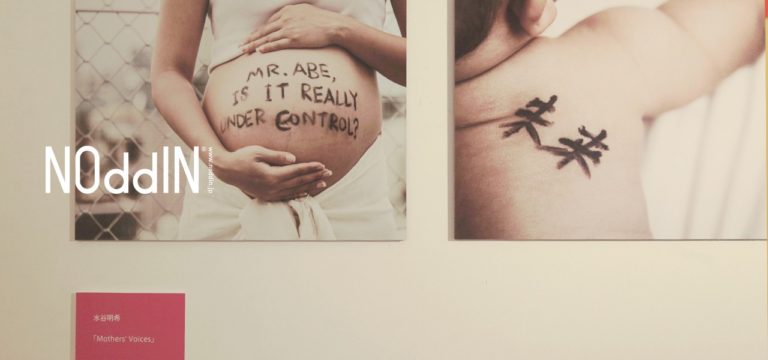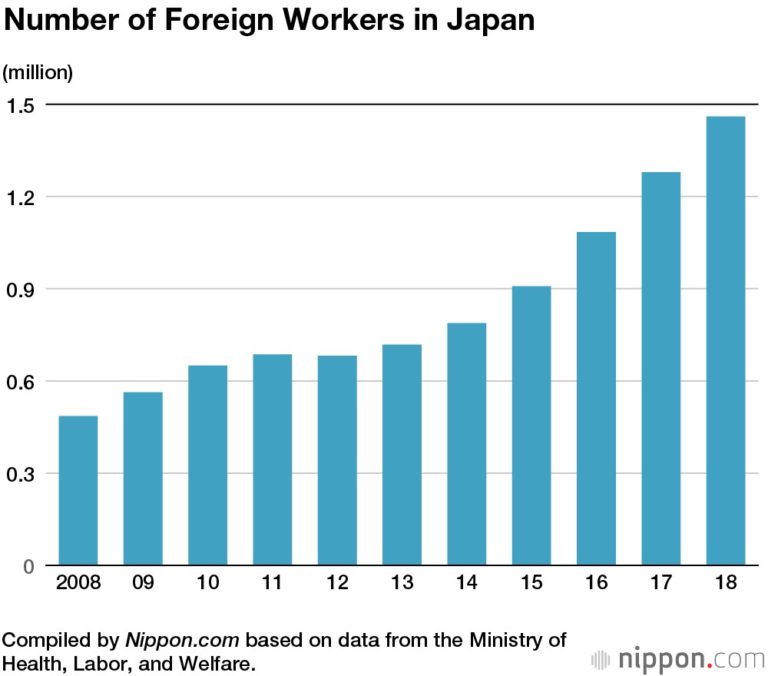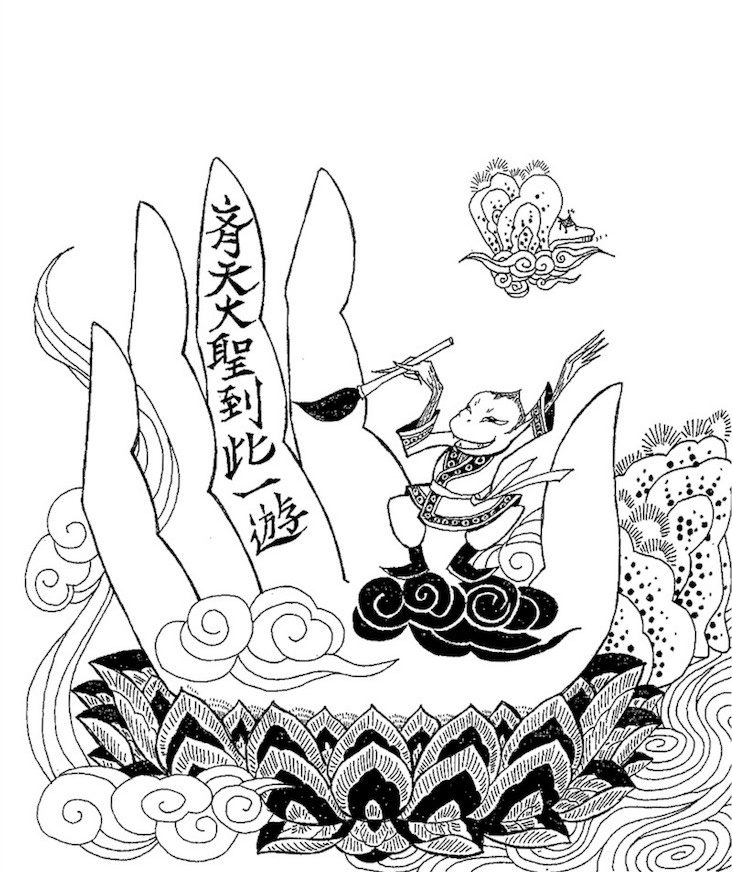COVID-19 and its counter measures—testing and social distancing—have exposed a grotesque structure of socio-economic disparity, along with the racist and ageist regimes of bio-power that sustain the capitalist system. The system’s relentless drive for surplus value, which allows it to accumulate wealth, divides the world into the capitalist class, which is predominantly “white” and well-educated and represents a very small fraction of the world’s population, and the rest—the majority who support the system by supplying their labor whether manual or non-manual. The latter group breaks further down into sub-groups, namely the middle class, the working class, and the working poor. This class hierarchy reflects the degree to which individuals are subjected to precarious employment and are thus rendered disposable as workers. Placed at the very bottom of the social hierarchy, racial minorities and immigrant workers, in particular, suffer from significantly lower wages, more dangerous working conditions, and more stressful living environments. Yet, they are the ones who are essential for enabling the capitalist machine of wealth-creation because their precarious status in labor markets is the real and scandalous reason for how and why capitalism can produce surplus value. And now, this paradox—their existence being simultaneously essential and disposable—extends to their very lives. Living at the edge of life as “essential workers”, they are continually confronting to the risk of destitution and mortality. “This life is a superfluous one,” as Achille Mbembe puts it, whose value “is so meager that it has no equivalence, whether market or—even less—human.”2
Not only does COVID-19 remind us of the truism that capital requires the structure of racial and age-based discrimination as an essential condition of its own survival, of sustaining the endless cycle of wealth-production, accumulation, and reproduction. It also reveals capitalism’s perceived stability during times of “normalcy” as a mere fantasy as it brings to the fore capital’s systemic subjection of minorities to the double precarity of impoverishment and mortality. This “sudden” visibility of the bio-necro power of capitalism unapologetically debunks the myth that our world is built on universal humanist values such as the equality and dignity of life. It compels us to acknowledge the unvarnished truth that capital insults and betrays these values, all the while preserving the logic of inequality as the natural order of things. Who is worthy of life? Who is to die? Who possesses the economic and social capital to live well? Who is to be denied or deprived of these things? Daily updates about the COVID-19 victims among social and economic minorities living in slum quarters, poor neighborhoods, or nursing homes act as disturbing reminders of the reality that this virus is far from a great “equalizer.” This reality directs our attention to the hierarchical organization of life’s value as dictated by the axis of bio-necro power. Testing and social distancing are indeed privileges that remain out of reach for socially and economically marginalized peoples.
**********************
Japan is a country that appears to have succeeded in mitigating the tragedies of the COVID-19 outbreak seen across Western Europe and North America. As of May 6, there have been 15,374 cases of infection and 566 deaths in the country. These numbers are significantly lower than most countries, but they indicate a palpable and dramatic increase in the scale of transmission compared to even a little more than a month ago when Japan was still debating whether it should hold the Olympic games as planned. How does the Japanese case of COVID-19 help illustrate the point that the pandemic acts as the catalyst of capital’s biopolitical and necropolitical machinations?
The Abe administration’s COVID-19 policies give the impression that Japan is indeed a country undivided by racial and ageist hierarchies and is therefore completely free from the system that ranks people’s lives accordingly. It appears as if Japan’s effective containment of the pandemic is due to its particular or exceptional character of “ethnic homogeneity,” often understood as manifested in the country’s apparently robust and uniform practices of social hygiene. But the recent spike in COVID-19 cases suggests that the Abe administration’s policies premised on Japanese exceptionalism have, in fact, put those living in Japan at risk of morbidity. It is, of course, absurd to assume that Japan’s seemingly unified and homogeneous appearance as a nation makes it an exception. Shinzo Abe’s hesitation to implement a nationwide lockdown policy may be a reflection of his unwarranted faith in the myth of Japanese exceptionalism, but it is largely due to his fear that his signature economic policy called “Abenomics,” which has kept him in power for seven years, will crumble as a result.3 The same fear contributed to Abe’s delusional confidence that Japan could still host the Olympic games this summer. This confidence puzzled the rest of the world, to say the least, as many countries had already been overwhelmed by the unprecedented confusion and anxiety generated by the rapidly growing number of COVID-19 infections and fatalities. Abe only came to his senses after being confronted by Australia, Canada, New Zealand, and the United Kingdom’s decisions to withdraw from the Tokyo Olympics. The majority of Japanese citizens also found Abe’s confidence to be oblivious to and insensitive about the global health crisis: according to polls, nearly 70% considered postponing the games as the most reasonable path to follow. Abe’s inability to make a sound and responsible decision until faced with pressure from other countries and his own people shows the extraordinary degree to which the Prime Minister was blinded by the false notion that the economic stimulus of the Olympic games should take precedence over anything else.
Indeed, the Abe administration’s approach to the international sporting event was disingenuous from the outset. Abe pointedly ignored the victims of the Fukushima nuclear disasters and their ongoing social, financial, health, and psychological problems by bringing the Olympic torch relay to irradiated towns and villages in the prefecture to impress the world with a spectacle of “miraculous recovery.” He has called it the “recovery Olympics” (fukkō gorin), in reference to the 2011 disaster, insulting those whose overall wellbeing has been permanently destroyed by it. In a series of interviews that I conducted with many former Fukushima residents displaced by the nuclear meltdown, they expressed frustration, even anger, at the government’s use and abuse of the disaster to promote the Olympics. The government has also carefully coordinated with the Tokyo Electric Power Company (TEPCO) to propagate the country’s “recovery” and a new “safety myth”— safe enough not only to host the games but also to bring people back to Fukushima and reactivate nuclear reactors around the country.

This strategy of governance designed to propel the myths of “recovery” and “safety” is perfectly consonant with Abe’s tendency to deemphasize the enormity of the coronavirus pandemic in his desire to present Japan as an exceptional nation capable of overcoming unprecedented crises. What dictates this strategy is simply his staunch commitment to placing the interests of giant corporations such as TEPCO and other entities that have always supported the conservative politics of the Liberal Democratic Party and thus Abenomics over people’s wellbeing. Critics of Abe’s COVID-19 policies have pointed out that the actual rate of infection is likely ten to twelve times higher than the official estimate. The underestimation of the number of cases is due to the lack of extensive testing, a result of Abe’s policies focused exclusively on contact tracing as a measure of cluster containment.4 By containing the disease within a defined geographic area by early detection of cases, the government hoped to break the chain of transmission and thus prevent its spread to new areas. Its unwillingness to employ an extensive testing strategy, however, predictably backfired and Japan has clearly failed to control or hinder the transmission, as can be seen from the extent to which hospitals in Tokyo and other metropolitan areas have been overwhelmed by a influx of coronavirus patients. The administration’s irrational insistence on holding the Olympic games this summer and its determination to prioritize economic stimulus policies designed to bring enormous profit to industries and corporations over human life have certainly guided its approach. Thus, Abe’s erratic responses: his government was most concerned with economic losses and initially promoted coupons such as “Go to Travel” and “Go to Eat” to spur consumption among people before finally announcing a state of emergency on April 7.
Japan may appear free from class hierarchies or wealth disparities like those in India and the US. Indeed, racist and ageist ideology might not determine Japanese politics as much as those of the US; however, it is absolutely mistaken to believe that class divisions and the bio-necro power of capitalism are absent in the country. They are simply manifested in different ways. One in six people in Japan lives in relative poverty according to a 2017 Organization for Economic Cooperation and Development (OECD) report. This marks the second highest rate among G7 nations after the US. Among those who live below the poverty line, single mothers struggle most. The divorce rate jumped 66% between 1980 and 2012, and as of 2019 single mother-lead households number 1,232,000. There is no legal protection for divorced mothers such as joint custody in Japan, and women there tend to be solely financially responsible for their children, despite often being ill-equipped financially to raise them. 54.6% of single mothers live in relative poverty as 20% of them have no jobs and 57% work part-time or low-paying jobs in supermarkets and other service sectors. Many single mothers also tend to look for work only after they get divorced, but it is extremely difficult for women to be hired into well-paying, full-time jobs after dropping out of the workforce to raise their children. And because of safety-net reforms developed over the past two decades, they can depend on little help from the government. Today, Japan has the highest share of single mothers in the labor force of any country in the OECD. It should be noted that women in Japan are also often victims of domestic violence and other family-related problems, furthering their economic precarity. Teenagers and young women run away from their families or spouses and frequently end up working in the sex industry and nightlife districts (the government estimates that there are about 300,000 sex workers). All of these female workers have now become the most vulnerable population under the COVID-19 pandemic as they have fallen deeper into poverty after losing part-time jobs or cannot afford to practice social distancing in the essential businesses and nightclubs where they work.
Foreign workers, who are typically contract or part-time employees, have also fallen victim to COVID-19. The Ministry of Health, Labor and Welfare in Japan reported that there were 1,660,000 foreigners working as manual laborers, “technical interns,” and “international students” in 2019. Of them, 29.1% work in the manufacturing sector that has been most severely affected by COVID-19. Equally devastated is the 12.5% of foreign laborers employed in the catering and lodging industries. Many of these workers have lost their jobs, and the labor unions representing them have received over 2,000 cases of consultations or complaints between early February and mid-April. Because of the travel restrictions and reduced airline service, they cannot return to their home countries. For example, a Japanese Brazilian woman working for a car parts factory in Aichi prefecture was fired at the end of March and is now on the verge of losing her accommodations as she has been told by her company to move out before it terminates gas and electricity services in employee housings. Labor union representatives call the rapid and massive layoffs of foreign workers “corona-layoffs” (korona-giri).

The Abe administration’s pretense of Japan’s social unity and ethnic homogeneity is a rhetorical device that conveniently conceals massive socio-economic disparities and structures of discrimination experienced widely by many working women and foreign workers. COVID-19 not only exposes the harsh realities of their working and living conditions but also exacerbates their double precarity of impoverishment and fatality.
******************
The COVID-19 pandemic does not signify the sudden and abrupt inauguration of a state of exception. Rather, we have always lived in such a state as the bio-necro power of capitalism generates a sharply divided world, classifying human life into those worthy of protection and those considered disposable. The pandemic is simply and unambiguously amplifying this reality. Some say that the state is using COVID-19 to tighten its grip on our freedom by subjecting us to home imprisonment or refining pre-existing surveillance systems. This concern is legitimate in some cases, especially in light of recent developments in China and Hungary. But there is a real danger in following a familiar liberalist dichotomy between state control and individual freedom: it leads us to misrecognize the problem that has become palpable under the COVID-19 situations.5 As Michel Foucault rightly points out, the “individual,” as well as “population,” is an effect of the biopolitical management of society by the modern state.6 Positing individual freedom as a counterforce against the state’s control and management of biological life is like a story from the Chinese classic, Journey to the West: the Monkey King finds himself in the hand of Buddha after struggling so hard to escape from it. We will all ultimately find ourselves captured by the state—or ultimately the bio-necro power of capitalism to which the state itself is amenable—if we seek our “liberation” in the liberalist politics of individual freedom. The state’s management and control of biological life is a long-standing character of the modern capitalist system, and COVID-19 didn’t invent it. The pandemic brings to the fore the capitalist machine of wealth-creation that has always differentiated our lives according to racist, ageist, and sexist classificatory schemas. The real question confronting us at this juncture is whether we rehabilitate this machine or break with it after so much tragedy, so many deaths.
